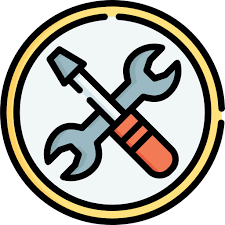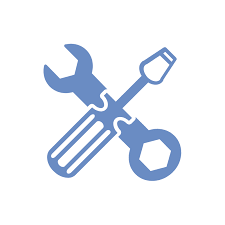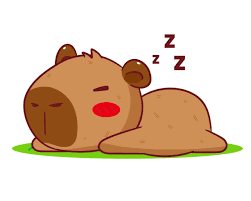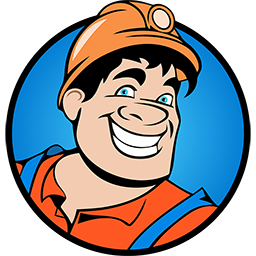Discover Relief and Recovery. QA TEST
Discover Relief and Recovery
Discover Relief and Recovery
Discover Relief and Recovery
Discover Relief and Recovery
Our Expert Care for a Pain-Free future. QA TEST
Our Expert Care for a Pain-Free future
Our Expert Care for a Pain-Free future
Our Expert Care for a Pain-Free future
Our Expert Care for a Pain-Free future
Chiropractic care encompasses a holistic approach to health, focusing on the relationship between spinal health and QA TEST
hi next line QA TEST
show me something QA TEST
overall well-being. By addressing spinal misalignments and enhancing nervous system function through QA TEST
manual adjustments, our chiropractors aim to alleviate pain, improve mobility, and promote the body's natural healing abilities. QA TEST
This approach is beneficial for a variety of conditions, ranging from back and neck pain to QA TEST headaches, sports injuries, and musculoskeletal disorders. QA TEST
Understanding these conditions and how chiropractic care can address them underscores the QA TEST effectiveness and versatility of this healthcare discipline. QA TEST
QA TEST QA TEST
QA TEST QA TEST QA TEST
QA TEST QA TEST QA TEST QA TEST
QA TEST QA TEST QA TEST QA TEST QA TEST
QA TEST QA TEST QA TEST QA TEST QA TEST
QA TEST QA TEST QA TEST QA TEST QA TEST
Chiropractic care encompasses a holistic approach to health, focusing on the relationship between spinal health and overall well-being.
By addressing spinal misalignments and enhancing nervous system function through manual adjustments, our chiropractors aim to alleviate pain, improve mobility, and promote the body's natural healing abilities.
This approach is beneficial for a variety of conditions, ranging from back and neck pain to headaches, sports injuries, and musculoskeletal disorders.
Understanding these conditions and how chiropractic care can address them underscores the effectiveness and versatility of this healthcare discipline.
QA TEST :
Chiropractic care encompasses a holistic approach to health, focusing on the relationship between spinal health and overall well-being.
By addressing spinal misalignments and enhancing nervous system function through manual adjustments, our chiropractors aim to alleviate pain, improve mobility, and promote the body's natural healing abilities.
This approach is beneficial for a variety of conditions, ranging from back and neck pain to headaches, sports injuries, and musculoskeletal disorders.
Understanding these conditions and how chiropractic care can address them underscores the effectiveness and versatility of this healthcare discipline.
Interact with the diagram below to find your pain points. QA TEST
QA TEST QA TEST QA TEST QA TEST QA TEST QA TEST QA TEST QA TEST
QA TEST QA TEST QA TEST QA TEST QA TEST QA TEST QA TEST QA TEST QA TEST
QA TEST QA TEST QA TEST QA TEST QA TEST QA TEST QA TEST QA TEST QA TEST
QA TEST QA TEST QA TEST QA TEST QA TEST QA TEST QA TEST QA TEST QA TEST QA TEST
Chest
Arm and Shoulder
Head Neck
Shoulder
Leg
Other conditions

Men's
- Athletic Performance QA TEST QA TEST QA TEST QA TEST QA TEST QA TEST QA TEST QA TEST QA TEST QA TEST QA TEST QA TEST
- Stress & Sleep Problem QA TEST long texttttttttttttttttttttttttttttttttttttttttttttttttttttttttttttttttttttttttttttttttttttttttttttttttttttttttttttttttttttttttttttttttttttttttttttttttttttttttttt
- Pain Management QA TEST QA TEST QA TEST QA TEST QA TEST QA TEST QA TEST QA TEST QA TEST QA TEST QA TEST QA TEST
- Hormonal Balance and Testosterone Health QA TEST QA TEST QA TEST QA TEST QA TEST QA TEST QA TEST QA TEST QA TEST QA TEST
- Mobility & Flexibility QA TEST QA TEST QA TEST QA TEST QA TEST QA TEST QA TEST QA TEST QA TEST QA TEST QA TEST QA TEST

Women's
- Pregnancy Pain QA TEST QA TEST QA TEST QA TEST QA TEST QA TEST QA TEST QA TEST QA TEST QA TEST QA TEST QA TEST
- Menstrual Cramps QA TEST QA TEST QA TEST QA TEST QA TEST QA TEST QA TEST QA TEST QA TEST QA TEST QA TEST QA TEST
- Postpartum Recovery QA TEST QA TEST QA TEST QA TEST QA TEST QA TEST QA TEST QA TEST QA TEST QA TEST QA TEST
- Balance Testosterone Levels QA TEST QA TEST QA TEST QA TEST QA TEST QA TEST QA TEST QA TEST QA TEST QA TEST QA TEST
- Improves Overall Performance QA TEST QA TEST QA TEST QA TEST QA TEST QA TEST QA TEST QA TEST QA TEST QA TEST QA TEST
- Stress QA TEST QA TEST QA TEST QA TEST QA TEST QA TEST QA TEST QA TEST QA TEST QA TEST QA TEST QA TEST QA TEST
Children
- Immune System QA TEST QA TEST QA TEST QA TEST QA TEST QA TEST QA TEST QA TEST QA TEST QA TEST QA TEST QA TEST
- Scoliosis QA TEST QA TEST QA TEST QA TEST QA TEST QA TEST QA TEST QA TEST QA TEST QA TEST QA TEST QA TEST QA TEST
- Digestion and Constipation QA TEST QA TEST QA TEST QA TEST QA TEST QA TEST QA TEST QA TEST QA TEST QA TEST
- Allergies QA TEST QA TEST QA TEST long texttttttttttttttttttttttttttttttttttttttttttttttttttttttttttttttttttttttttttttttttttttttttttttttttttttttttttttttttttttttttttttttttttttttttttttttttttttttttttt
- Post-Birth Recovery QA TEST QA TEST long texttttttttttttttttttttttttttttttttttttttttttttttttttttttttttttttttttttttttttttttttttttttttttttttttttttttttttttttttttttttttttttttttttttttttttttttttttttttttttt
- StressGrowth Milestone QA TEST long texttttttttttttttttttttttttttttttttttttttttttttttttttttttttttttttttttttttttttttttttttttttttttttttttttttttttttttttttttttttttttttttttttttttttttttttttttttttttttt
- Mental Focus QA TEST QA TEST QA TEST long texttttttttttttttttttttttttttttttttttttttttttttttttttttttttttttttttttttttttttttttttttttttttttttttttttttttttttttttttttttttttttttttttttttttttttttttttttttttttttt
- InfantCare QA TEST QA TEST QA TEST long texttttttttttttttttttttttttttttttttttttttttttttttttttttttttttttttttttttttttttttttttttttttttttttttttttttttttttttttttttttttttttttttttttttttttttttttttttttttttttt
Elderly
- Arthritis QA TEST QA TEST QA TEST long texttttttttttttttttttttttttttttttttttttttttttttttttttttttttttttttttttttttttttttttttttttttttttttttttttttttttttttttttttttttttttttttttttttttttttttttttttttttttttt
- Knee Pains QA TEST QA TEST QA TEST long texttttttttttttttttttttttttttttttttttttttttttttttttttttttttttttttttttttttttttttttttttttttttttttttttttttttttttttttttttttttttttttttttttttttttttttttttttttttttttt
- Degeneration QA TEST QA TEST QA TEST QA TEST QA TEST QA TEST QA TEST QA TEST QA TEST QA TEST QA TEST QA TEST long texttttttttttttttttttttttttttttttttttttttttttttttttttttttttttttttttttttttttttttttttttttttttttttttttttttttttttttttttttttttttttttttttttttttttttttttttttttttttttt
- Osteoporosis QA TEST QA TEST QA TEST QA TEST QA TEST QA TEST QA TEST QA TEST QA TEST QA TEST QA TEST QA QA TEST long texttttttttttttttttttttttttttttttttttttttttttttttttttttttttttttttttttttttttttttttttttttttttttttttttttttttttttttttttttttttttttttttttttttttttttttttttttttttttttt
Wellness
- Sleep Problem QA TEST QA TEST QA TEST QA TEST QA TEST QA TEST QA TEST QA TEST QA TEST QA TEST QA TEST QA
- Immunity QA TEST QA TEST QA TEST QA TEST QA TEST QA TEST QA TEST QA TEST QA TEST QA TEST QA TEST QA TEST QA
- Move Improvement QA TEST QA TEST QA TEST QA TEST QA TEST QA TEST QA TEST QA TEST QA TEST QA TEST QA TEST
Work related
- Carpal Tunnel Syndrome QA TEST long texttttttttttttttttttttttttttttttttttttttttttttttttttttttttttttttttttttttttttttttttttttttttttttttttttttttttttttttttttttttttttttttttttttttttttttttttttttttttttt
- Repetitive Strain QA TEST QA TEST QA TEST QA TEST QA TEST QA TEST QA TEST QA TEST QA TEST QA TEST QA TEST Q
- Text Neck QA TEST QA TEST long texttttttttttttttttttttttttttttttttttttttttttttttttttttttttttttttttttttttttttttttttttttttttttttttttttttttttttttttttttttttttttttttttttttttttttttttttttttttttttt
- Plantar Fascilitis QA TEST QA TEST QA TEST QA TEST QA TEST QA TEST QA TEST QA TEST QA TEST QA TEST QA TEST QA TEST
- Stress QA TEST QA TEST QA TEST QA TEST QA TEST QA TEST QA TEST QA TEST QA TEST QA TEST QA TEST QA TEST QA TEST
Men's
- Athletic Performance QA TEST QA TEST QA TEST QA TEST QA TEST QA TEST QA TEST QA TEST QA TEST QA TEST QA TEST QA TEST
- Stress & Sleep Problem QA TEST long texttttttttttttttttttttttttttttttttttttttttttttttttttttttttttttttttttttttttttttttttttttttttttttttttttttttttttttttttttttttttttttttttttttttttttttttttttttttttttt
- Pain Management QA TEST QA TEST QA TEST QA TEST QA TEST QA TEST QA TEST QA TEST QA TEST QA TEST QA TEST QA TEST
- Hormonal Balance and Testosterone Health QA TEST QA TEST QA TEST QA TEST QA TEST QA TEST QA TEST QA TEST QA TEST QA TEST
- Mobility & Flexibility QA TEST QA TEST QA TEST QA TEST QA TEST QA TEST QA TEST QA TEST QA TEST QA TEST QA TEST QA TEST
Women's
- Pregnancy Pain QA TEST QA TEST QA TEST QA TEST QA TEST QA TEST QA TEST QA TEST QA TEST QA TEST QA TEST QA TEST
- Menstrual Cramps QA TEST QA TEST QA TEST QA TEST QA TEST QA TEST QA TEST QA TEST QA TEST QA TEST QA TEST QA TEST
- Postpartum Recovery QA TEST QA TEST QA TEST QA TEST QA TEST QA TEST QA TEST QA TEST QA TEST QA TEST QA TEST
- Balance Testosterone Levels QA TEST QA TEST QA TEST QA TEST QA TEST QA TEST QA TEST QA TEST QA TEST QA TEST QA TEST
- Improves Overall Performance QA TEST QA TEST QA TEST QA TEST QA TEST QA TEST QA TEST QA TEST QA TEST QA TEST QA TEST
- Stress QA TEST QA TEST QA TEST QA TEST QA TEST QA TEST QA TEST QA TEST QA TEST QA TEST QA TEST QA TEST QA TEST
Children
- Immune System QA TEST QA TEST QA TEST QA TEST QA TEST QA TEST QA TEST QA TEST QA TEST QA TEST QA TEST QA TEST
- Scoliosis QA TEST QA TEST QA TEST QA TEST QA TEST QA TEST QA TEST QA TEST QA TEST QA TEST QA TEST QA TEST QA TEST
- Digestion and Constipation QA TEST QA TEST QA TEST QA TEST QA TEST QA TEST QA TEST QA TEST QA TEST QA TEST
- Allergies QA TEST QA TEST QA TEST long texttttttttttttttttttttttttttttttttttttttttttttttttttttttttttttttttttttttttttttttttttttttttttttttttttttttttttttttttttttttttttttttttttttttttttttttttttttttttttt
- Post-Birth Recovery QA TEST QA TEST long texttttttttttttttttttttttttttttttttttttttttttttttttttttttttttttttttttttttttttttttttttttttttttttttttttttttttttttttttttttttttttttttttttttttttttttttttttttttttttt
- StressGrowth Milestone QA TEST long texttttttttttttttttttttttttttttttttttttttttttttttttttttttttttttttttttttttttttttttttttttttttttttttttttttttttttttttttttttttttttttttttttttttttttttttttttttttttttt
- Mental Focus QA TEST QA TEST QA TEST long texttttttttttttttttttttttttttttttttttttttttttttttttttttttttttttttttttttttttttttttttttttttttttttttttttttttttttttttttttttttttttttttttttttttttttttttttttttttttttt
- InfantCare QA TEST QA TEST QA TEST long texttttttttttttttttttttttttttttttttttttttttttttttttttttttttttttttttttttttttttttttttttttttttttttttttttttttttttttttttttttttttttttttttttttttttttttttttttttttttttt
Elderly
- Arthritis QA TEST QA TEST QA TEST long texttttttttttttttttttttttttttttttttttttttttttttttttttttttttttttttttttttttttttttttttttttttttttttttttttttttttttttttttttttttttttttttttttttttttttttttttttttttttttt
- Knee Pains QA TEST QA TEST QA TEST long texttttttttttttttttttttttttttttttttttttttttttttttttttttttttttttttttttttttttttttttttttttttttttttttttttttttttttttttttttttttttttttttttttttttttttttttttttttttttttt
- Degeneration QA TEST QA TEST QA TEST QA TEST QA TEST QA TEST QA TEST QA TEST QA TEST QA TEST QA TEST QA TEST long texttttttttttttttttttttttttttttttttttttttttttttttttttttttttttttttttttttttttttttttttttttttttttttttttttttttttttttttttttttttttttttttttttttttttttttttttttttttttttt
- Osteoporosis QA TEST QA TEST QA TEST QA TEST QA TEST QA TEST QA TEST QA TEST QA TEST QA TEST QA TEST QA QA TEST long texttttttttttttttttttttttttttttttttttttttttttttttttttttttttttttttttttttttttttttttttttttttttttttttttttttttttttttttttttttttttttttttttttttttttttttttttttttttttttt
Wellness
- Sleep Problem QA TEST QA TEST QA TEST QA TEST QA TEST QA TEST QA TEST QA TEST QA TEST QA TEST QA TEST QA
- Immunity QA TEST QA TEST QA TEST QA TEST QA TEST QA TEST QA TEST QA TEST QA TEST QA TEST QA TEST QA TEST QA
- Move Improvement QA TEST QA TEST QA TEST QA TEST QA TEST QA TEST QA TEST QA TEST QA TEST QA TEST QA TEST
Work related
- Carpal Tunnel Syndrome QA TEST long texttttttttttttttttttttttttttttttttttttttttttttttttttttttttttttttttttttttttttttttttttttttttttttttttttttttttttttttttttttttttttttttttttttttttttttttttttttttttttt
- Repetitive Strain QA TEST QA TEST QA TEST QA TEST QA TEST QA TEST QA TEST QA TEST QA TEST QA TEST QA TEST Q
- Text Neck QA TEST QA TEST long texttttttttttttttttttttttttttttttttttttttttttttttttttttttttttttttttttttttttttttttttttttttttttttttttttttttttttttttttttttttttttttttttttttttttttttttttttttttttttt
- Plantar Fascilitis QA TEST QA TEST QA TEST QA TEST QA TEST QA TEST QA TEST QA TEST QA TEST QA TEST QA TEST QA TEST
- Stress QA TEST QA TEST QA TEST QA TEST QA TEST QA TEST QA TEST QA TEST QA TEST QA TEST QA TEST QA TEST QA TEST





















.png)